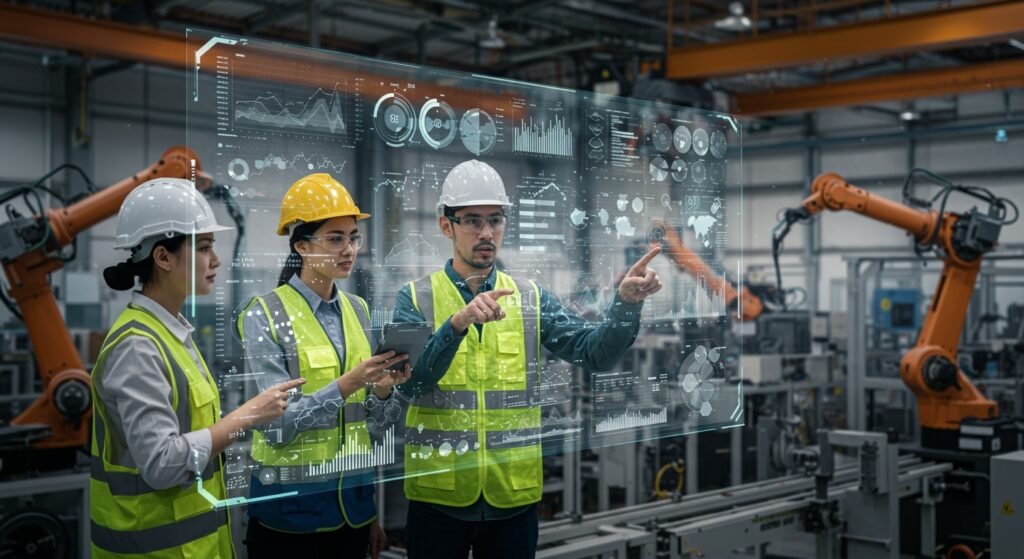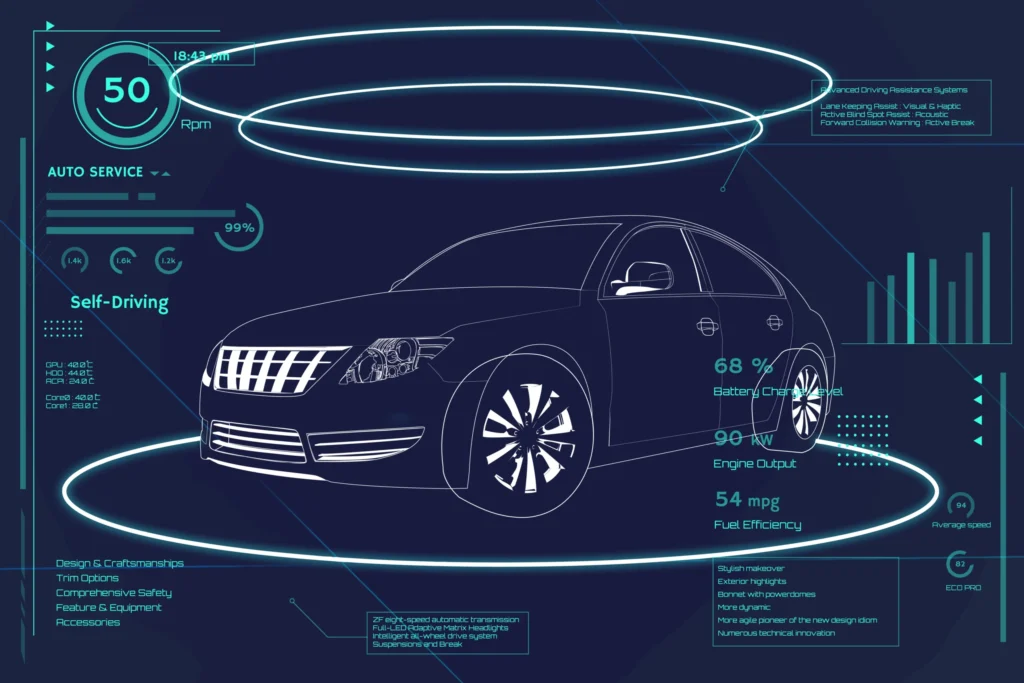The Future of AI-Driven Predictive Maintenance in Industrial Operations
Industrial operations are on the cusp of a revolutionary transformation, driven by advancements in Artificial Intelligence (AI). At the forefront of this revolution is predictive maintenance, a strategy that promises to dramatically alter how industries manage their assets and ensure operational continuity. By leveraging AI, companies can move beyond traditional, reactive, or even scheduled maintenance, anticipating equipment failures before they occur and minimizing costly downtime. This shift is not just about fixing things faster; it’s about building more resilient, efficient, and ultimately, more profitable industrial ecosystems.
Table of Contents
- The Evolution of Maintenance: From Reactive to Predictive
- What is AI-Driven Predictive Maintenance?
- Benefits of Implementing AI Predictive Maintenance
- Challenges and Solutions in Adoption
- The Transformative Impact: Industry Examples
- Looking Ahead: The Next 5 Years of Predictive Maintenance
- Conclusion: Embracing the Future of Industrial Efficiency
The Evolution of Maintenance: From Reactive to Predictive
Historically, maintenance has evolved through several stages. Reactive maintenance, often termed “run-to-failure,” involves repairing equipment only after it breaks down. This approach is costly, unpredictable, and can lead to significant production losses. Preventive maintenance, a step forward, involves scheduled inspections and repairs, attempting to prevent failures. While better, it often results in unnecessary maintenance on healthy equipment or, conversely, failures between scheduled checks.
The advent of predictive maintenance marked a significant leap. Utilizing condition-monitoring techniques, such as vibration analysis or thermal imaging, it allowed for monitoring equipment health in real-time. However, interpreting this data often required human expertise and was limited by the volume and complexity of information. Now, with AI, we enter a new era where machines can not only collect but also intelligently analyze vast datasets, making predictive maintenance truly powerful.
What is AI-Driven Predictive Maintenance?
AI-driven predictive maintenance utilizes advanced algorithms, machine learning (ML), and deep learning techniques to analyze data from various sources—sensors on machinery, historical maintenance logs, environmental factors, and more—to predict when equipment is likely to fail. Instead of relying on fixed schedules or reacting to breakdowns, AI models continuously learn from operational data, identifying subtle patterns and anomalies that indicate impending issues.
Key Technologies Driving AI Predictive Maintenance
- Internet of Things (IoT): Sensors embedded in machinery collect real-time data on temperature, vibration, pressure, current, and other critical parameters.
- Machine Learning Algorithms: These algorithms process the vast datasets, identifying correlations and developing models that can accurately predict failures. Examples include supervised learning (for known failure patterns) and unsupervised learning (for anomaly detection).
- Cloud Computing: Provides the scalable infrastructure required to store and process enormous amounts of data generated by industrial assets.
- Edge Computing: Processes data closer to the source (the machinery itself), reducing latency and enabling faster, localized decision-making.
Benefits of Implementing AI Predictive Maintenance
The advantages of adopting AI in predictive maintenance are multifaceted, offering substantial improvements across an organization’s operations:
| Benefit | Description |
|---|---|
| Reduced Downtime | By anticipating failures, maintenance can be scheduled proactively, minimizing unexpected production halts. |
| Lower Maintenance Costs | Avoids unnecessary scheduled maintenance and prevents catastrophic failures that require expensive repairs. |
| Extended Asset Lifespan | Timely intervention based on precise predictions helps preserve machinery, prolonging its operational life. |
| Enhanced Safety | Reducing unexpected equipment failures inherently improves safety for workers. |
| Optimized Resource Management | Better forecasting of maintenance needs allows for more efficient allocation of spare parts and technician time. |
Challenges and Solutions in Adoption
While the benefits are clear, implementing AI-driven predictive maintenance isn’t without its hurdles. Data quality and integration often pose significant challenges. Legacy systems may not be equipped to provide the necessary data, and integrating disparate data sources can be complex. Furthermore, a shortage of skilled personnel who can deploy, manage, and interpret AI models can slow adoption.
Solutions include investing in modern IoT infrastructure, utilizing data standardization platforms, and partnering with technology providers. Companies also need to focus on upskilling their workforce or recruiting new talent with expertise in data science and AI. For further insights into overcoming implementation barriers, consider exploring resources on AI in Industrial IoT.
The Transformative Impact: Industry Examples
Various industries are already reaping the rewards. In manufacturing, AI monitors conveyor belts, robotic arms, and CNC machines. In the energy sector, it keeps an eye on turbines and generators. Transportation relies on it for fleet maintenance, and even healthcare leverages it for critical medical equipment. The ability to prevent failures in high-stakes environments is invaluable.
Case Study: Enhancing Equipment Reliability
A major automotive manufacturer implemented an AI-driven predictive maintenance system for its assembly line robots. By analyzing vibration, temperature, and current data, the system learned to identify precursors to mechanical failures. Within six months, they reported a 25% reduction in unplanned downtime and a 15% decrease in overall maintenance costs, drastically improving their operational efficiency and throughput. This successful integration highlights the practical advantages of embracing advanced analytics for asset management, a concept applicable across various production settings. More on such transformations can be found in our article on AI in Manufacturing Process Optimization.
Looking Ahead: The Next 5 Years of Predictive Maintenance
The future of AI-driven predictive maintenance is poised for even greater sophistication. We can expect more advanced AI models, including reinforcement learning, that can not only predict failures but also suggest optimal repair actions or even initiate automated adjustments. The integration of digital twin technology will create virtual replicas of physical assets, allowing for simulation and testing of maintenance strategies in a risk-free environment. Furthermore, as 5G connectivity becomes more prevalent, the real-time data flow will accelerate, making instantaneous analysis and response a reality.
The emphasis will shift from merely predicting to actively prescribing and optimizing. Maintenance will become a fully integrated, intelligent component of overall operations, continually learning and adapting. This evolution will cement the role of predictive maintenance as a cornerstone of Industry 4.0, driving unprecedented levels of efficiency and reliability.
Conclusion: Embracing the Future of Industrial Efficiency
AI-driven predictive maintenance represents a pivotal advancement for industrial operations. By enabling proactive, data-informed decision-making, it minimizes downtime, reduces costs, and extends the lifespan of critical assets. While challenges exist, the path forward involves strategic investment in technology, data infrastructure, and human capital. Organizations that embrace this powerful paradigm will not only gain a significant competitive edge but will also build more sustainable, resilient, and intelligent industrial futures. The era of smart, self-optimizing factories is not just a concept; it is rapidly becoming our reality, with AI at its core.


